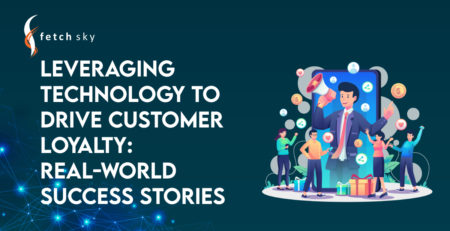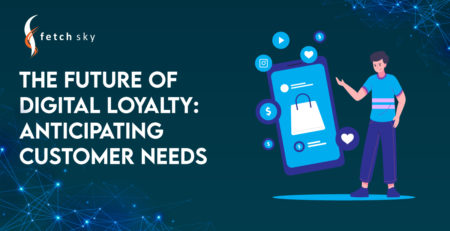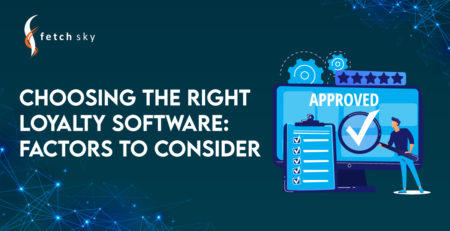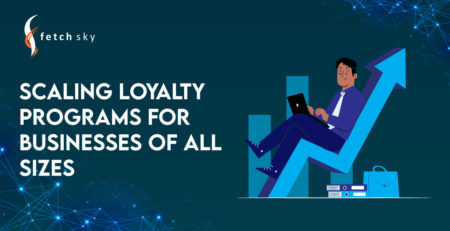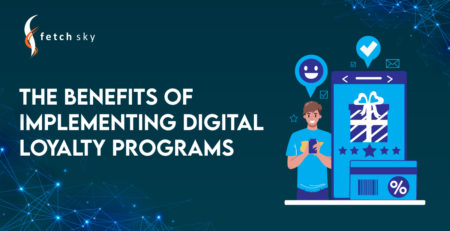Empowering Customer Data: 3 Illuminating Behavior and Preferences
Introduction
Customer data insights are what businesses are turning to for optimizing their loyalty programs, in the ever-evolving landscape of customer loyalty. Customer data has emerged as a powerful tool that allows companies to gain a deeper understanding of customer behavior and preferences. By leveraging this data effectively, businesses can create personalized and engaging loyalty offerings that foster stronger customer relationships and drive business growth. In this comprehensive blog, we will explore the significance of using customer data in loyalty programs, the types of data to collect, and strategies for analyzing and leveraging this data to enhance the effectiveness of loyalty programs.
In marketing, data is everything. The more data businesses have on their customers, the better they can design marketing programs and loyalty programs that appeal to them. According to Mckinsey, organizations leveraging customer behavioral insights outperform peers by 85% in sales growth and more than 25% in gross margin. However, you also have to recognize that data is not easy to come by. To get more data from their customers, businesses must get creative while still remembering the human behind the data and their right to privacy.
~Source
You can read our blogs to know what a Digital Loyalty Solution exactly is, its benefits, how it can boost customer retention, and how to make an attractive loyalty program. You can also find steps to integrate it into your websites and into your apps and into your business systems as well. Moreover, there’s a gaming option you can add to your loyalty program, you can find out more about that as well. For in-depth personalization details in Digital Loyalty Programs, click here. Defining Goals is another important for Loyalty Program, read more.
The Power of Data in Identifying Patterns
Data is the backbone of modern loyalty programs, providing businesses with a wealth of information about their customers. By analyzing loyalty data, including customer interactions, redemption patterns, and purchase behavior, businesses can identify recurring trends and patterns that hold valuable clues about customer preferences.
-
Data Mining:
- Association Rule Mining: This technique analyzes large sets of customer transaction data to uncover hidden patterns and relationships. For example, it can reveal that customers who buy certain products together are more likely to participate in a loyalty program. By identifying these associations, businesses can create bundled promotions or personalized loyalty incentives.
- Clustering Analysis: Clustering involves grouping customers with similar characteristics based on their behavior, preferences, and demographics. Businesses can use clustering algorithms to segment their customer base effectively. For instance, an online retailer may discover that certain groups of customers frequently shop for sports equipment, allowing them to create loyalty programs tailored specifically for sports enthusiasts.
-
Predictive Analytics:
- Customer Behavior Forecasting: Predictive models use historical customer data to forecast future behavior. For instance, a telecommunications company might predict which customers are likely to churn based on usage patterns and demographics. This enables the company to preemptively offer retention incentives to those at risk of leaving.
- Loyalty Program Optimization: Predictive analytics can identify which elements of a loyalty program are most effective in driving customer loyalty. For example, it might reveal that offering a 10% discount to a specific segment of customers is more likely to result in increased spending than offering free shipping. This insight allows businesses to fine-tune their loyalty programs.
-
Social Media Listening:
- Sentiment Analysis: Social media listening tools employ natural language processing (NLP) techniques to analyze customer comments and reviews. Sentiment analysis determines whether customers are expressing positive or negative feelings about a brand or its loyalty program. If a particular loyalty initiative is well-received, businesses can amplify it. Conversely, if there are complaints or negative sentiments, adjustments can be made.
- Emerging Trends Identification: By monitoring social media conversations, businesses can spot emerging trends or topics of interest to their customers. For example, a cosmetic company might notice an uptick in discussions about eco-friendly packaging. This insight can lead to the development of environmentally conscious loyalty rewards or initiatives that align with customer values.
Customizing Loyalty Offerings based on Insights
Personalized Rewards:
Utilize the identified patterns to offer personalized rewards that resonate with individual customer preferences. Tailored rewards enhance the perceived value of the loyalty program, leading to higher engagement.
Timely Promotions:
Identify peak engagement times and customer buying patterns to deliver promotions and offers when customers are most receptive. Timely promotions increase the chances of customer participation and redemption.
Surprise and Delight:
Use data insights to create surprise rewards or offers for loyal customers, such as exclusive discounts on their favorite products. Surprise and delight strategies foster positive emotional connections with the brand.
Continual Improvement through Data Analysis
A/B Testing:
Conduct A/B testing on different loyalty offerings to determine which strategies resonate best with customers. This iterative approach ensures continuous improvement based on real-time data.
Feedback Incorporation:
Integrate customer feedback into loyalty program enhancements. Customer insights are invaluable in refining the loyalty program to meet evolving customer needs.
Conclusion
Leveraging customer data is an essential aspect of optimizing loyalty programs. By understanding customer behavior and preferences through data-driven insights, businesses can create personalized and effective loyalty offerings that resonate with their customers. The power of customer data lies in its ability to drive meaningful engagement, foster loyalty, and ensure long-term success in an increasingly competitive market. With the right approach to data collection, analysis, and personalization, businesses can build strong and lasting relationships with their customers, leading to increased retention, customer satisfaction, and overall business growth.
To get a complete guide to Digital Loyalty Solutions, Click Here.



